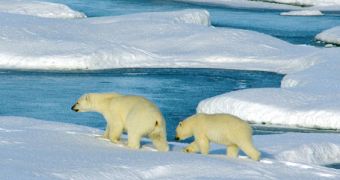Most nations are currently doing their best to cut down on their gas emissions and to switch to more environmentally friendly energy sources such as biofuel, or solar, wind and tidal power.
However, as praise-worthy as these attempts and achievements are, it seems that things are not moving as fast as our Mother Earth needs them to.
Thus, recent official reports, coming from research stations in the Arctic region, indicate that the concentrations of carbon dioxide in the atmosphere of the area have “successfully” overthrown all other past records, reaching and even surpassing the not-very-appealing figure of 400 parts per million (ppm).
Scientists warn us that it is the first time in 800,000 years that something like this happens.
According to e360.yale.edu, it is human society – and its heavily industrialized ways – that must be held responsible for setting up this new standard for pollution. Apparently, prior to the industrial boom, CO2 levels revolved somewhere around 280 ppm, so it is quite obvious that things aren't looking very good.
As of lately, global concentrations of carbon dioxide in the far north have been roughly 395 ppm, but once winter and spring settled in and all vegetation shut down, numbers shot all the way up to 400 ppm.
This is due to the fact that your ordinary trees and grass were no longer there to absorb these harmful substances. Studies show that the regions of Alaska, Greenland, Norway and Iceland were the most affected.
So, with vegetation up and running, we get 395 ppm of carbon dioxide in our atmosphere. Take plants out of the equation, and you end up facing a record number of 400 ppm.
We are no government officials in charge of making the world a better place and taking care of the environment, but is seems to us that perhaps planting more forests instead of continuously chopping down the ones we have could be a note-worthy solution to our gas-emissions problem.

 14 DAY TRIAL //
14 DAY TRIAL //